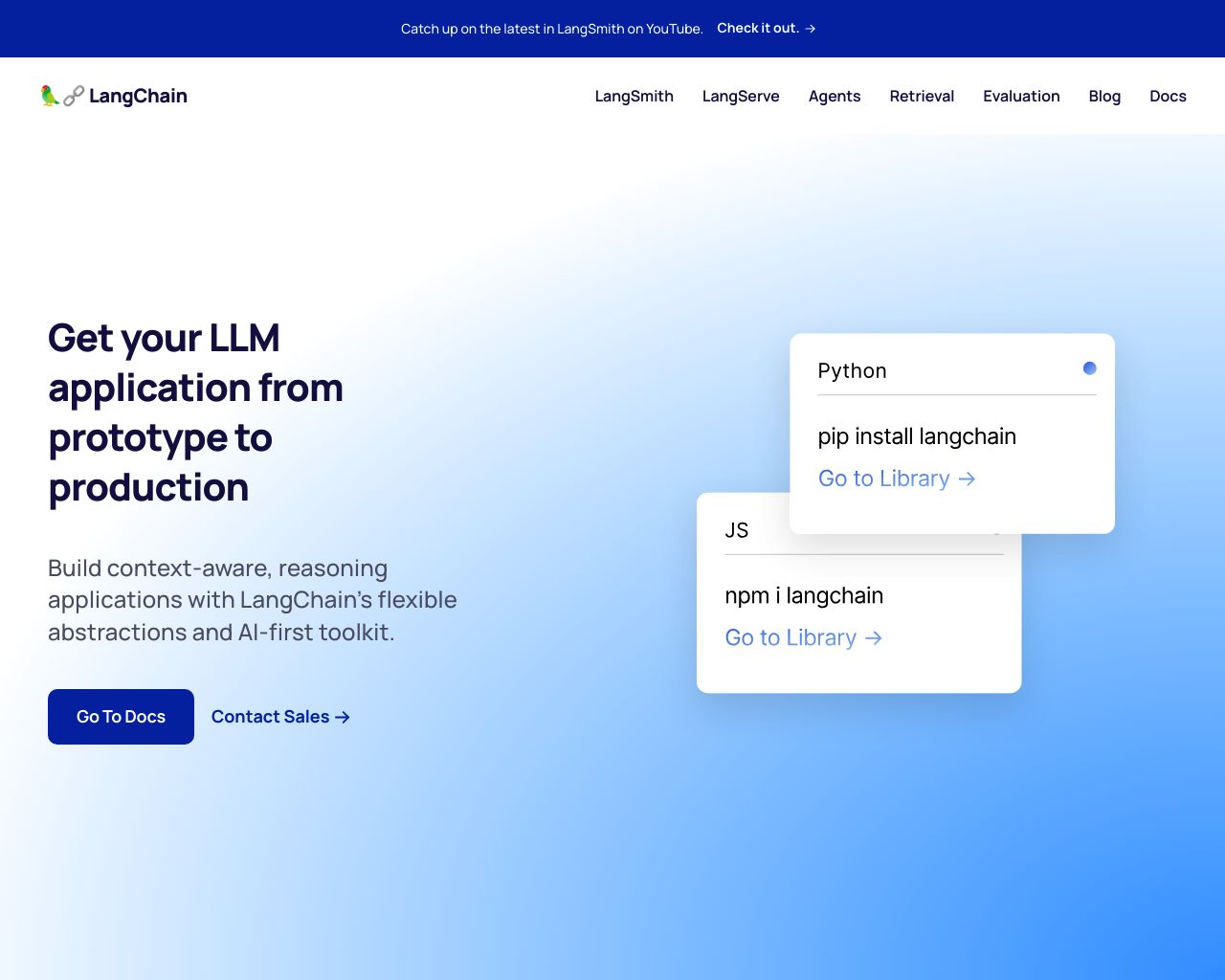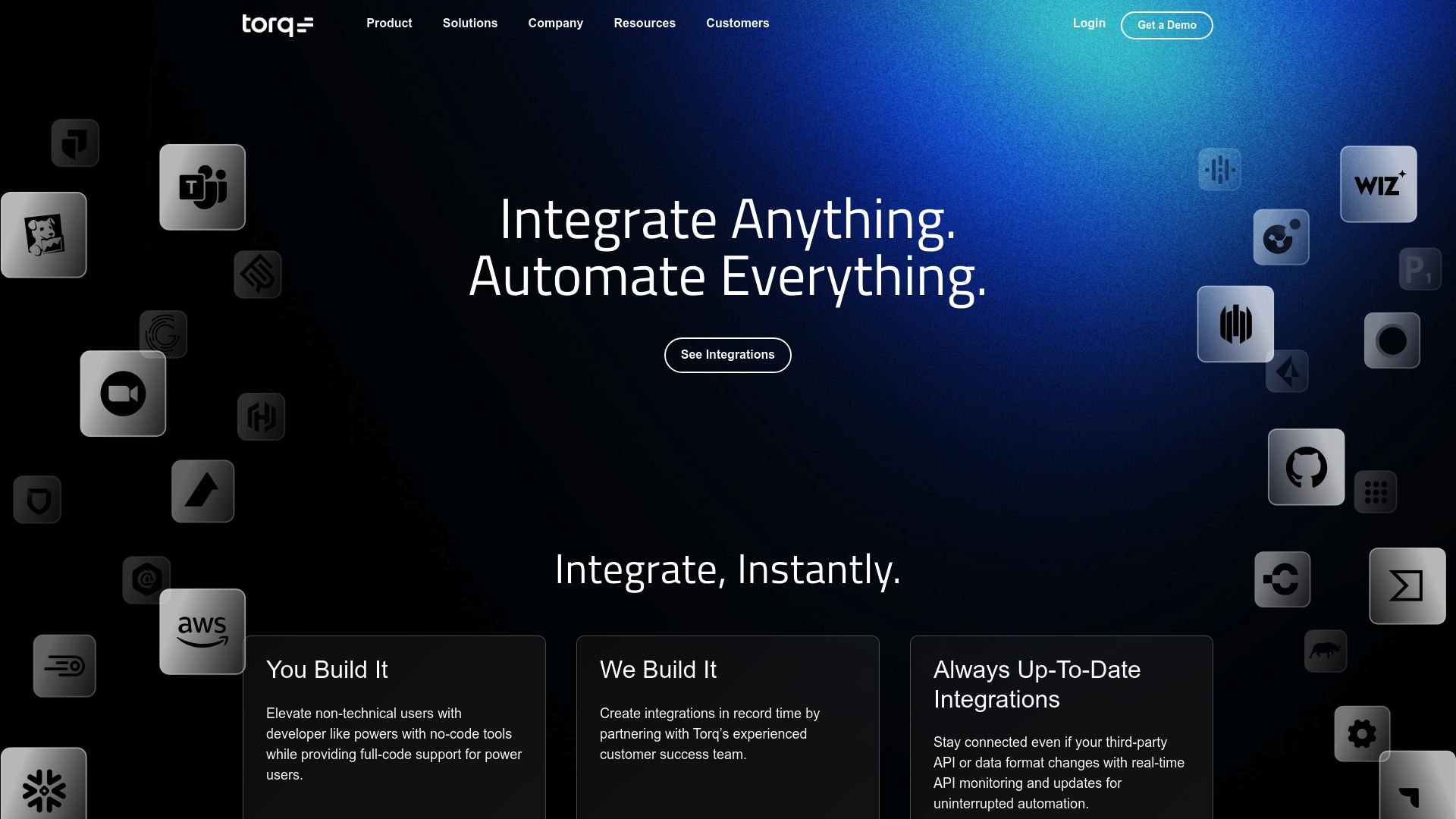LangChain vs. Torq Hyperautomation: AI Automation Showdown
AI-powered automation platforms revolutionize how businesses streamline operations and enhance productivity. This comparison explores LangChain vs. Torq Hyperautomation, and SmythOS, three leading solutions in the AI automation space. LangChain offers developers a powerful framework for building language model applications, while Torq Hyperautomation specializes in security operations automation. SmythOS emerges as a versatile alternative, combining ease of use with advanced AI capabilities. We’ll examine each platform’s strengths, limitations, and ideal use cases to help you choose the right tool for your AI automation needs.
LangChain Overview
LangChain offers developers a powerful open-source framework for building applications powered by large language models (LLMs). The platform simplifies the entire LLM application lifecycle, from development to deployment, with a comprehensive suite of tools and components.
At its core, LangChain provides building blocks for creating sophisticated AI agents. These agents can handle complex tasks, maintain context across interactions, and integrate with various data sources and APIs. LangChain’s modular approach allows developers to customize their applications, whether they’re building chatbots, question-answering systems, or more complex AI-driven workflows.
LangChain offers developers a powerful open-source framework for building applications powered by large language models… The platform simplifies the entire LLM application lifecycle, from development to deployment
LangChain excels in its flexibility and integration capabilities. The platform supports multiple LLM providers, offering developers the freedom to choose or switch between different AI models. This adaptability extends to its extensive library of connectors for databases, APIs, and other external services, enabling AI agents to access and process diverse data sources effectively.


LangChain’s ecosystem includes several key components that enhance its functionality. LangGraph allows for the creation of stateful, multi-actor applications, modeling complex workflows as graphs. LangSmith provides tools for debugging, testing, and monitoring LLM applications, crucial for maintaining and optimizing AI systems in production environments. LangServe simplifies the deployment process by turning LangChain chains into REST APIs.
LangChain’s ecosystem includes several key components… LangGraph allows for the creation of stateful, multi-actor applications, modeling complex workflows as graphs.
While LangChain offers extensive capabilities, it primarily caters to developers and requires some coding knowledge to fully utilize its potential. The platform lacks a visual builder or no-code editor, which might present a steeper learning curve for non-technical users. However, for those with the necessary skills, LangChain provides a robust and flexible foundation for building advanced AI applications.
Torq Hyperautomation Overview
Torq Hyperautomation delivers an AI-driven platform for enterprise-grade security operations. It connects the entire security infrastructure stack, enabling organizations to remediate security events and orchestrate complex processes instantly at scale.


Torq’s platform features customizable workflows that automate security tasks, freeing professionals for strategic activities. It uses triggers to initiate workflows based on events from third-party services, user actions, internal system events, or scheduled times. The platform includes modular building blocks called steps that automate specific actions, supporting API-based functions and scripting.
Torq’s platform features customizable workflows that automate security tasks, freeing professionals for strategic activities.
Variable management allows for persistent data elements during workflow execution, including organizational details and time-sensitive information. Torq boasts extensive built-in integrations with third-party services, facilitating easy connections during workflow execution. The platform also offers automated case management for handling security events from creation to resolution.
Workspace functionality in Torq enables resource grouping with role-based access control, streamlining collaboration and resource sharing. This comprehensive approach to security automation addresses the growing need for efficient, scalable solutions in increasingly complex cybersecurity environments.
While Torq excels in security automation, it lacks some features found in more general-purpose AI agent builders. It doesn’t offer a visual builder or no-code editor for creating AI agents, limiting its accessibility to non-technical users. Additionally, Torq’s focus on security operations may make it less suitable for organizations seeking a broader range of AI applications beyond cybersecurity.
Feature Comparison
LangChain and Torq Hyperautomation offer distinct approaches to AI-powered automation, with significant feature gaps in core components and security. LangChain provides a flexible framework for building LLM-powered applications, emphasizing development tools and AI agent capabilities. In contrast, Torq Hyperautomation focuses on security operations automation with workflow orchestration.
LangChain excels in AI agent development, offering tools like LangGraph for creating stateful, multi-actor applications. It supports various LLM integrations and provides extensive customization options for developers. However, LangChain lacks a visual builder or no-code editor, limiting accessibility for non-technical users. Torq Hyperautomation, while powerful for security automation, does not offer equivalent AI agent building capabilities or LLM integrations.
In terms of security, Torq Hyperautomation has a clear advantage with its focus on enterprise-grade security operations. It offers robust features for automated case management, extensive third-party integrations, and role-based access control. LangChain, while emphasizing security best practices, does not provide the same level of security-specific features or compliance tools that Torq Hyperautomation offers as part of its core functionality.
Feature Comparison Table
| LangChain | Torq Hyperautomation | SmythOS | |
|---|---|---|---|
| CORE FEATURES | |||
| Visual Builder | ❌ | ✅ | ✅ |
| No-Code Options | ❌ | ✅ | ✅ |
| Explainability & Transparency | ✅ | ❌ | ✅ |
| Problem-Solving Capabilities | ✅ | ❌ | ✅ |
| Human-AI Interaction | ✅ | ❌ | ✅ |
| Agent Work Scheduler | ❌ | ✅ | ✅ |
| SECURITY | |||
| Constrained Alignment | ❌ | ✅ | ✅ |
| IP Control | ❌ | ✅ | ✅ |
| COMPONENTS | |||
| Huggingface AIs | ✅ | ❌ | ✅ |
| Zapier APIs | ❌ | ❌ | ✅ |
| All other APIs, RPA | ✅ | ❌ | ✅ |
| Logic | ✅ | ❌ | ✅ |
| Data Lakes | ❌ | ✅ | ✅ |
| DEPLOYMENT OPTIONS (EMBODIMENTS) | |||
| Deploy as API | ✅ | ❌ | ✅ |
| Deploy as Webhook | ❌ | ✅ | ✅ |
| Staging Domains | ❌ | ✅ | ✅ |
| Production Domains | ❌ | ❌ | ✅ |
| API Authentication (OAuth + Key) | ✅ | ❌ | ✅ |
| Deploy as Scheduled Agent | ❌ | ❌ | ✅ |
| Scalability | ✅ | ❌ | ✅ |
| DATA LAKE SUPPORT | |||
| Hosted Vector Database | ❌ | ✅ | ✅ |
| Sitemap Crawler | ❌ | ❌ | ✅ |
| YouTube Transcript Crawler | ❌ | ❌ | ✅ |
| URL Crawler | ❌ | ❌ | ✅ |
| PDF Support | ✅ | ❌ | ✅ |
| Word File Support | ❌ | ✅ | ✅ |
Best Alternative to LangChain and Torq Hyperautomation
SmythOS stands out as the superior alternative to LangChain and Torq Hyperautomation, offering a comprehensive AI agent development platform that combines ease of use with powerful features. Our drag-and-drop interface enables users to create sophisticated AI workflows without extensive coding knowledge, making advanced AI capabilities accessible to a broader audience.
Unlike LangChain’s developer-focused framework or Torq’s security-centric approach, SmythOS provides a versatile solution for building and deploying AI agents across various use cases. We offer pre-built API integrations and support for multiple AI models, allowing users to leverage cutting-edge technologies from providers like OpenAI, Anthropic, and Hugging Face seamlessly.
SmythOS provides a versatile solution for building and deploying AI agents across various use cases. We offer pre-built API integrations and support for multiple AI models…
SmythOS excels in its deployment options, offering flexibility that surpasses both LangChain and Torq. Users can deploy AI agents as APIs, webhooks, scheduled tasks, or integrate them into existing applications. This versatility ensures that SmythOS can adapt to diverse business needs and technical environments.
Our platform’s robust security features, including data encryption and OAuth support, address the enterprise-grade requirements that Torq Hyperautomation targets, while also providing the AI agent capabilities that LangChain offers. SmythOS uniquely combines these strengths, offering a secure, scalable, and feature-rich environment for AI development and deployment.
By choosing SmythOS, users gain access to a comprehensive suite of tools for creating, managing, and scaling AI agents, surpassing the limitations of both LangChain and Torq Hyperautomation. Our platform empowers organizations to harness the full potential of AI, driving innovation and efficiency across industries.
Conclusion
LangChain, Torq Hyperautomation, and SmythOS each offer unique approaches to AI-powered automation, but SmythOS stands out as the most versatile and user-friendly option. LangChain provides a powerful framework for developers to build LLM applications, while Torq Hyperautomation excels in security-focused automation. However, both platforms have limitations that SmythOS effectively addresses.
SmythOS combines the best of both worlds, offering a comprehensive platform for creating and deploying AI agents without sacrificing ease of use or flexibility. Its intuitive drag-and-drop interface and extensive integration ecosystem make it accessible to both technical and non-technical users, bridging the gap that LangChain’s developer-centric approach creates. Unlike Torq Hyperautomation’s narrow focus on security, SmythOS supports a wide range of use cases across industries.
The platform’s ability to deploy agents anywhere, from APIs to chatbots, gives it a significant edge in versatility. SmythOS also prioritizes scalability and security, making it suitable for enterprise-level deployments while maintaining the agility needed for smaller organizations.
For those looking to harness the power of AI without extensive coding knowledge or being limited to specific domains, SmythOS is the clear choice. Explore our diverse range of AI-powered agent templates to jumpstart your AI journey, or create a free SmythOS account to experience the future of AI automation firsthand. With SmythOS, you can unlock limitless possibilities and transform your workflow with intelligent agents, all while enjoying the support of a platform designed for innovation and efficiency.
Last updated:
Disclaimer: The information presented in this article is for general informational purposes only and is provided as is. While we strive to keep the content up-to-date and accurate, we make no representations or warranties of any kind, express or implied, about the completeness, accuracy, reliability, suitability, or availability of the information contained in this article.
Any reliance you place on such information is strictly at your own risk. We reserve the right to make additions, deletions, or modifications to the contents of this article at any time without prior notice.
In no event will we be liable for any loss or damage including without limitation, indirect or consequential loss or damage, or any loss or damage whatsoever arising from loss of data, profits, or any other loss not specified herein arising out of, or in connection with, the use of this article.
Despite our best efforts, this article may contain oversights, errors, or omissions. If you notice any inaccuracies or have concerns about the content, please report them through our content feedback form. Your input helps us maintain the quality and reliability of our information.

